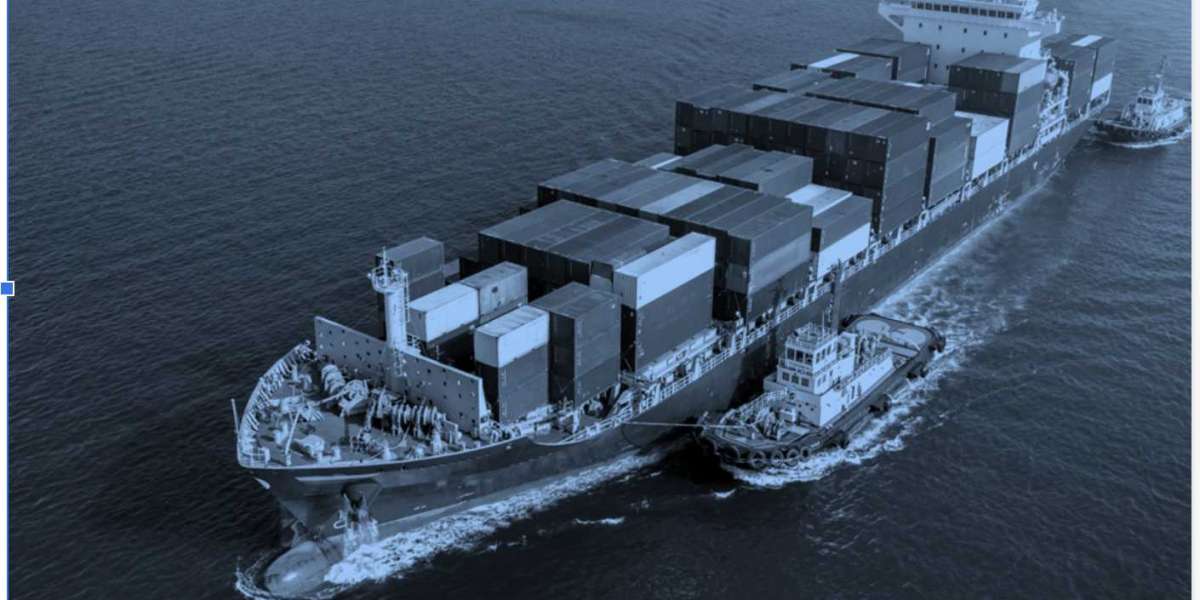Green Methanol Market is projected to reach $3,149.05 million by 2031 from $122.35 million in 2021, growing at a CAGR of 39.63% during the forecast period 2022-2031.
Green methanol or renewable methanol is produced from a variety of sources such as biomasses, including forestry and agricultural waste, byproducts, biogas, sewage, municipal solid waste (MSW), black liquor from the pulp and paper industry, carbon dioxide, and green hydrogen produced with renewable electricity. Methanol produced from biomass is called bio-methanol, and the one produced from CO2, green hydrogen, and renewable electricity is known as e-methanol.
Market Lifecycle Stage
Green methanol has been around for years now, with companies such as CRI, OCI N.V., and Chemrec AB being some of the earliest players in the market. Carbon Recycling International (CRI) set up a first-of-its-kind e-methanol demonstration plant in 2010-11 in Iceland and became the first company to start commercial production of e-methanol in 2012 under the brand name Vulcanol. OCI N.V.’s subsidiary BioMCN was the first company to enter bio-methanol production, with the first project starting in 2010 in the Netherlands with a capacity of 200 KT/year.
Since then, the market has grown significantly, with demand increasing every day owing to strict carbon-emission regulations in the maritime industry and growing emphasis on biofuels from the governments. The maritime industry, biofuels, and support from the government are expected to further drive the growth of the market during the forecast period.
Industrial Impact
The growth of the green methanol market is closely tied to the growing demand for green methanol from the maritime industry as a clean and sustainable fuel source. Growing demand for green methanol from the maritime industry has led to a growing number of project announcements for green methanol around the globe. Additionally, a growing number of maritime shipping and logistic companies have announced the decision to include methanol-powered ships in their portfolio. For instance, in September 2022, the chairmen of China Merchants and COSCO Shipping Bulk announced that methanol as a primary source of fuel for their ships would be at the forefront of their research in the future.
Impact of COVID-19
The outbreak of COVID-19 has caused several delays in manufacturing operations, which have resulted in the slowdown of the green methanol market. Also, supply chain disruptions have negatively impacted the green methanol market. Currently, companies are trying to secure long-term supply contracts with other suppliers to maintain smooth operations and an uninterrupted supply of green methanol to consumers.
Market Segmentation:
Segmentation 1: by End-Use Industry
- Transportation/Mobility
- Chemical Industry
- Power Generation
- Other End-Use Industry
The transportation/mobility segment is the largest end-use industry and is expected to dominate the market during the forecast period 2022-2031. The transportation/mobility segment is witnessing the growing adoption of green methanol due to the rising emphasis on the decarbonization of the marine industry.
Segmentation 2: by Application
- Fuel
- Chemical Feedstock
- Other Application
The fuel segment is the largest application segment and is expected to dominate the market during the forecast period 2022-2031. Green methanol is being used as a fuel, primarily in the maritime industry, owing to strict regulations and growing emphasis on the decarbonization of the maritime industry. The International Maritime Organization (IMO) has set an ambitious target of reducing international shipping carbon emissions per transport work by at least 40% by 2030 and by 70% by 2050, from 2008 levels. This is expected to be one of the major drivers of the growing application of green methanol as fuel in the maritime industry.
Segmentation 3: by Methanol Type
- Bio-Methanol
- E-Methanol
The bio-methanol segment is the largest in methanol type and is expected to dominate the market during the forecast period 2022-2031. Bio-methanol is produced from biological feedstock such as forest residue, municipal solid waste (MSW), biogas, and biomass. Bio-methanol production has been around for decades and does not require large investments, unlike e-methanol production, which requires large investments to set up green hydrogen and carbon capture plants.
Segmentation 4: by Region
- North America - U.S., Canada, and Mexico
- Europe - Germany, Denmark, Sweden, Netherlands, and Rest-of-Europe
- China
- U.K.
- Asia-Pacific and Japan - Japan, India, South Korea, Australia, and Rest-of-Asia-Pacific and Japan
- Rest-of-the-World - South America and the Middle East and Africa
Europe dominates the green methanol market due to the presence of several leading companies, such as Carbon Recycling International (CRI), European Energy, and Liquid Wind AB, in the region. A highly developed renewable energy market and growing investment from shipping companies such as Auramarine and A.P. Moller – Maersk are also contributing to the dominant share of Europe in the market.
Recent Developments in the Green Methanol Market
- In September 2022, Sanlorenzo – an Italian yacht builder, and Rolls-Royce announced their plans to develop and build a large luxury yacht equipped with a methanol-powered engine propulsion system that would be running on carbon-neutral green methanol. The first yacht built under this partnership will be equipped with two MTU (a core brand of Rolls-Royce) methanol engines from Rolls-Royce and is expected to set sail in 2026.
- In August 2022, European Energy signed an agreement with Anaergia for the supply of up to 60,000 metric tons per year of liquefied biogenic carbon dioxide (CO2) for a period of the next ten years. European Energy will use this CO2 to produce e-methanol for A.P. Moller – Maersk as part of their previously signed agreement in March 2022.
- In March 2022, OCI N.V. signed a partnership with NortH2 to develop the first integrated large-scale green ammonia and green methanol value chain through green hydrogen supply by NortH2 to OCI N.V. plants in the Netherlands.
- In March 2022, Mitsubishi Gas Chemical Company, Inc. and JFE Engineering Corporation announced that they had succeeded in producing methanol from CO? recovered from waste incineration exhaust gas using the carbon capture and utilization (CCU) process. The pilot plant was set up at Mitsubishi Gas Chemical Niigata Research Laboratory, and the companies have announced that they will continue to collaborate to create a decarbonized society.
- In February 2022, Carbon Recycling International installed the largest CO2-to-methanol reactor in CRI's Anyang project, Henan province, China. The installed reactor is designed on Carbon Recycling International’s emissions-to-liquid (ETL) process technology.
- In September 2021, A.P. Moller - Maersk invested in California-based WasteFuel to develop green bio-methanol in North America and Asia. Maersk’s investment will be used by WasteFuel for developing the infrastructure for bio-refineries, which will enable the company to utilize the most effective technologies available to produce sustainable fuels from unrecoverable waste.
Demand – Drivers and Limitations
Following are the demand drivers for the green methanol market:
- Rising Use of Green Methanol in the Chemical Industry
- Government Activities toward Low-carbon Infrastructure
- Increasing Demand for Green Methanol in Renewable Energy Storage
The market is expected to face some limitations as well due to the following challenges:
- Limited Availability of Renewable Feedstock Sources for Bio-Methanol
- High Cost of e-Methanol Production
Get Free Sample - https://bisresearch.com/requestsample?id=1385type=download
Key Market Players and Competition Synopsis
The companies that are profiled have been selected based on inputs gathered from primary experts and analyzing company coverage, product portfolio, and market penetration.
Green Methanol Market, Revenue Share (by Methanol Type), 2021
Bio-methanol is the largest segment in the market, accounting for around 98.27% market share in 2021, while e-methanol contributed around 1.73% share.
Some prominent names established in this market are:
Company Type 1: Bio-Methanol Producers
- BASF SE
- Carbon Recycling International (CRI)
- OCI N.V.
- A.P. Moller – Maersk
- Södra
- Enerkem
- GIDARA Energy
- Nordic Green ApS
- WasteFuel
- Glocal Green
Company Type 2: e-Methanol Producers
- OCI N.V.
- A.P. Moller – Maersk
- Methanex Corporation
- Mitsubishi Gas Chemical Company, Inc. (MCG)
- European Energy
- Carbon Recycling International (CRI)
- Eni S.p.A.
- Liquid Wind AB
- Synhelion SA
- HIF Global
- ABEL Energy Pty Ltd.
- Southern Green Gas Limited
Companies that are not a part of the previously mentioned pool have been well represented across different sections of the report (wherever applicable).
How can this report add value to an organization?
Product/Innovation Strategy: The product segment helps the reader understand the different types of green methanol produced and their potential globally. Moreover, the study provides the reader with a detailed understanding of the green methanol market by end-use industry (transportation/mobility, chemical industry, power generation, and other end-use industry), by application (fuel, chemical feedstock, other application), and by methanol type (bio-methanol and e-methanol).
Growth/Marketing Strategy: The green methanol market has seen major development by key players operating in the market, such as business expansion, partnership, collaboration, and joint ventures. The favored strategy for the companies has been partnerships and joint ventures to strengthen their position in the green methanol market. For instance, in September 2022, Winterthur Gas Diesel (WinGD) and HSD Engine (HSD) announced that the companies would partner to develop an engine capable of running on green methanol by 2024.
Competitive Strategy: Key players in the green methanol market analyzed and profiled in the study involve major green methanol producers. Moreover, a detailed competitive benchmarking of the players operating in the green methanol market has been done to help the reader understand how players stack against each other, presenting a clear market landscape. Additionally, comprehensive competitive strategies such as partnerships, agreements, and collaborations will aid the reader in understanding the untapped revenue pockets in the market.
Analyst’s Thoughts
According to Sachin Singh, Lead Analyst, BIS Research, "The green methanol market is expected to register continuous growth during the forecast period owing to the growing demand for sustainable energy sources, rising green methanol demand from the maritime industry, and investment from the government toward green and sustainable technologies. Moreover, growing investment in renewable energy sources and demand for energy storage technologies are also expected to contribute toward the growth of the green methanol market during the forecast period.”
BIS Research Offerings - https://bisresearch.com/our-offerings/subscriptions
You May Also Like -








